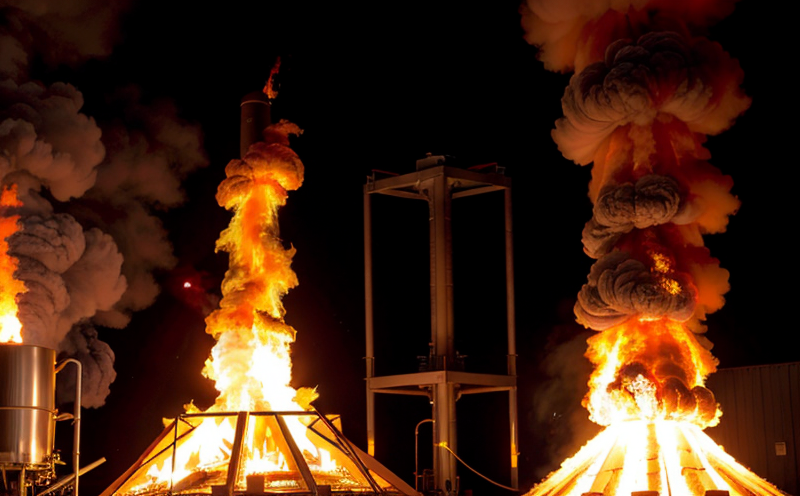CSA C22 Flammability Testing of Electrical Equipment
The CSA standard C22 is a comprehensive set of guidelines designed to ensure the safety and reliability of electrical equipment in various environments. One critical aspect addressed by CSA C22 is flammability testing, which evaluates the ignition hazard potential of materials used in electrical devices. This service ensures that products comply with stringent regulatory requirements, thereby protecting users from fire hazards.
The testing procedure outlined in CSA C22 involves subjecting specimens to controlled conditions intended to replicate real-world scenarios where flammable materials might be exposed to heat sources or ignition. The primary objective is to determine the minimum temperature required for a material to ignite and sustain combustion, known as the Ignition Temperature (IT). Additionally, the standard assesses the flame spread rate and smoke production of tested materials.
Flammability testing under CSA C22 is crucial in the design and manufacturing stages of electrical equipment. By identifying flammable components early on, manufacturers can implement necessary modifications to enhance safety without compromising functionality or performance. This proactive approach not only ensures compliance with regulatory bodies but also fosters trust among customers who rely on these products for daily use.
Specimens prepared according to the specified dimensions and conditions undergo rigorous testing using specialized equipment such as calorimeters, cone calorimeters, or other relevant apparatus designed specifically for flammability assessment. The data collected during these tests forms the basis of reports submitted by accredited laboratories like ours.
| Parameter | Description |
|---|---|
| Ignition Temperature (IT) | The lowest temperature at which a material will ignite and sustain combustion. |
| Flame Spread Rate | A measure of how quickly flames spread across the surface of the specimen. |
| Smoke Production Index (SPI) | An indicator of the amount of smoke generated by a material during combustion. |
The results obtained from flammability tests conducted per CSA C22 are used to classify materials into different categories based on their fire hazard potential. This classification helps manufacturers select appropriate materials for their products, ensuring both performance and safety standards are met.
Customer Impact and Satisfaction
Ensuring that electrical equipment meets rigorous flammability testing requirements significantly improves customer satisfaction. By reducing the risk of fire incidents, we contribute to a safer environment for consumers. Our services not only help manufacturers avoid potential recalls but also enhance their reputation in the market.
We understand that maintaining high levels of customer satisfaction is paramount to long-term success. That's why our team works closely with clients throughout every stage of the process—from initial consultation to final report delivery—ensuring they receive accurate and reliable results tailored specifically for their needs.
International Acceptance and Recognition
The importance of CSA C22 flammability testing extends beyond national borders. Many countries around the world recognize the value of adhering to these standards due to their stringent nature and emphasis on safety over convenience.
Some countries, such as Canada itself, require adherence to CSA norms for certain industries. However, other nations like the United States also accept results from laboratories accredited according to Canadian standards because they share similar values regarding product safety and human health protection.
This global acceptance means that companies operating internationally can leverage our services to meet diverse regulatory requirements efficiently without sacrificing quality or consistency across different markets.
Use Cases and Application Examples
- Consumer Electronics: Ensuring smartphones, laptops, and other portable devices comply with flammability regulations to prevent accidental fires caused by overheating batteries.
- Home Appliances: Verifying that washing machines, dryers, and ovens do not pose fire risks when exposed to ignition sources within their operating environments.
- Medical Devices: Guaranteeing that infusion pumps, ventilators, and other life-support systems remain safe even in case of malfunction or accidental exposure to flames.
| Scenario | Description |
|---|---|
| Thermal Cycling | The specimen is subjected to repeated cycles of heating and cooling to simulate prolonged exposure to varying temperatures. |
| Flame Impingement | A controlled flame is directed onto the surface of the specimen for a specified duration. |





